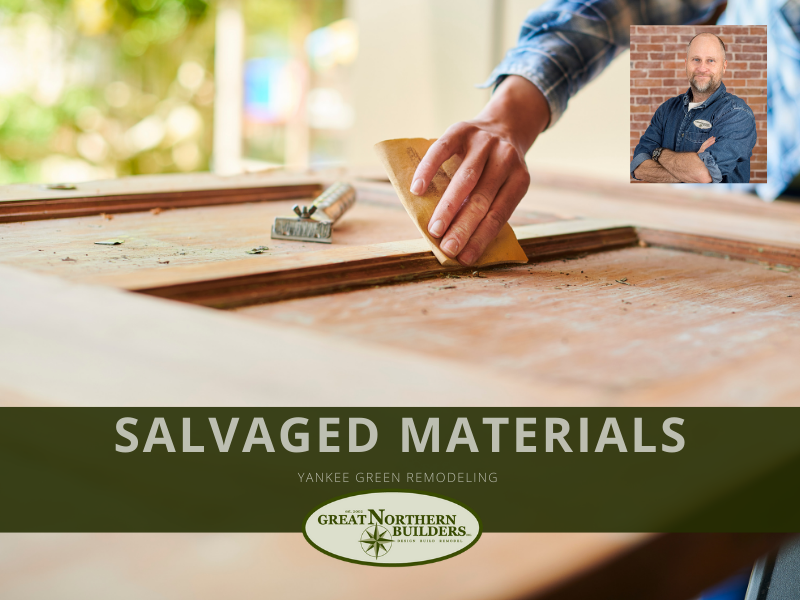As the principal designer in a design/build firm that frequently focuses on remodeling, I am oftentimes presented with the challenge of recommending to our clients what parts of a home to keep and what ones to change out. It’s an intriguing challenge.
Depending on the nature of the project, we might be dealing with any number of different materials- windows, doors, siding, interior or exterior trim, flooring, cabinets and counters, bath fixtures, and numerous other items, large and small. The decision of whether to keep or replace these items is influenced by a wide variety of factors: financial considerations, functionality, aesthetics, design logistics, building code regulations, energy efficiency, sentimental attachment.
One consideration that is getting factored to a greater degree is weighing the environmental impacts of whether or not to salvage existing materials. Oftentimes this involves keeping given materials in place; other times it involves re-using existing materials in a new location or for a new purpose. It’s an approach that I like to think of as being ‘Yankee Green’- finding new and creative uses for what happens to be right at hand. It’s a concept that’s even older than the oldest homes still standing in our area.
When I think of the terms used to describe many of today’s green building products- ‘locally sourced’, ‘responsibly harvested’, ‘built to last’- I find it interesting to note that these same terms can be used to describe the countless items that are torn out of homes every day as part of the remodeling process. Finding new uses for those materials, rather than having them trucked to landfills, is one of the more innovative ways we can ‘go green’.
Like many green products, salvaging and repurposing building materials can cost a bit more to use, but the environmental benefits of utilizing this great potential resource are myriad. Like any potential material source, it’s not for every client or every project. There are costs associated with salvaging materials, sometimes it is a more expensive investment to salvage materials than it is to purchase new. But where it’s a good fit, a bit of ‘Yankee Green’ design might just add a nice element of character, charm, and function, and be good for the environment to boot.

